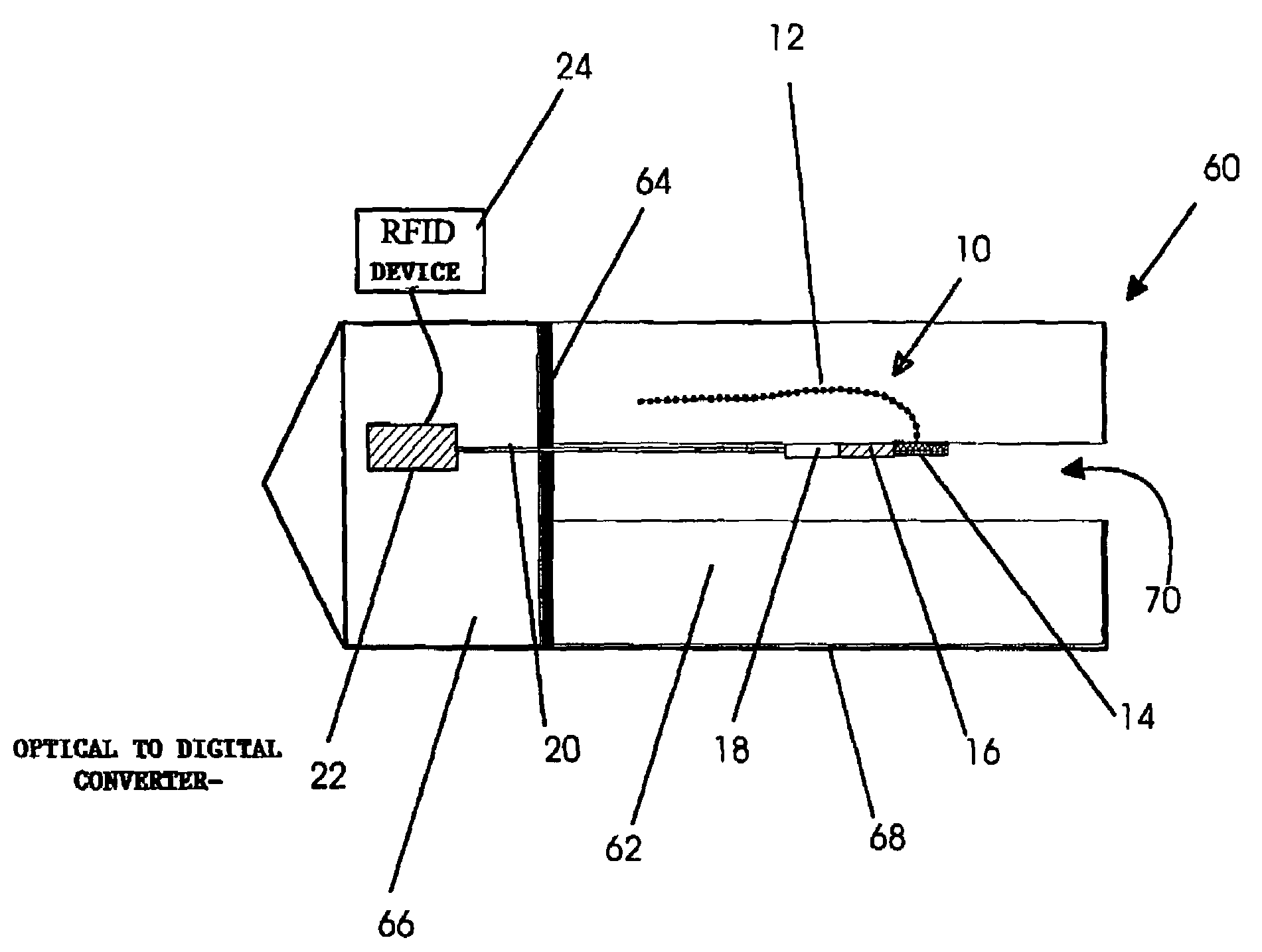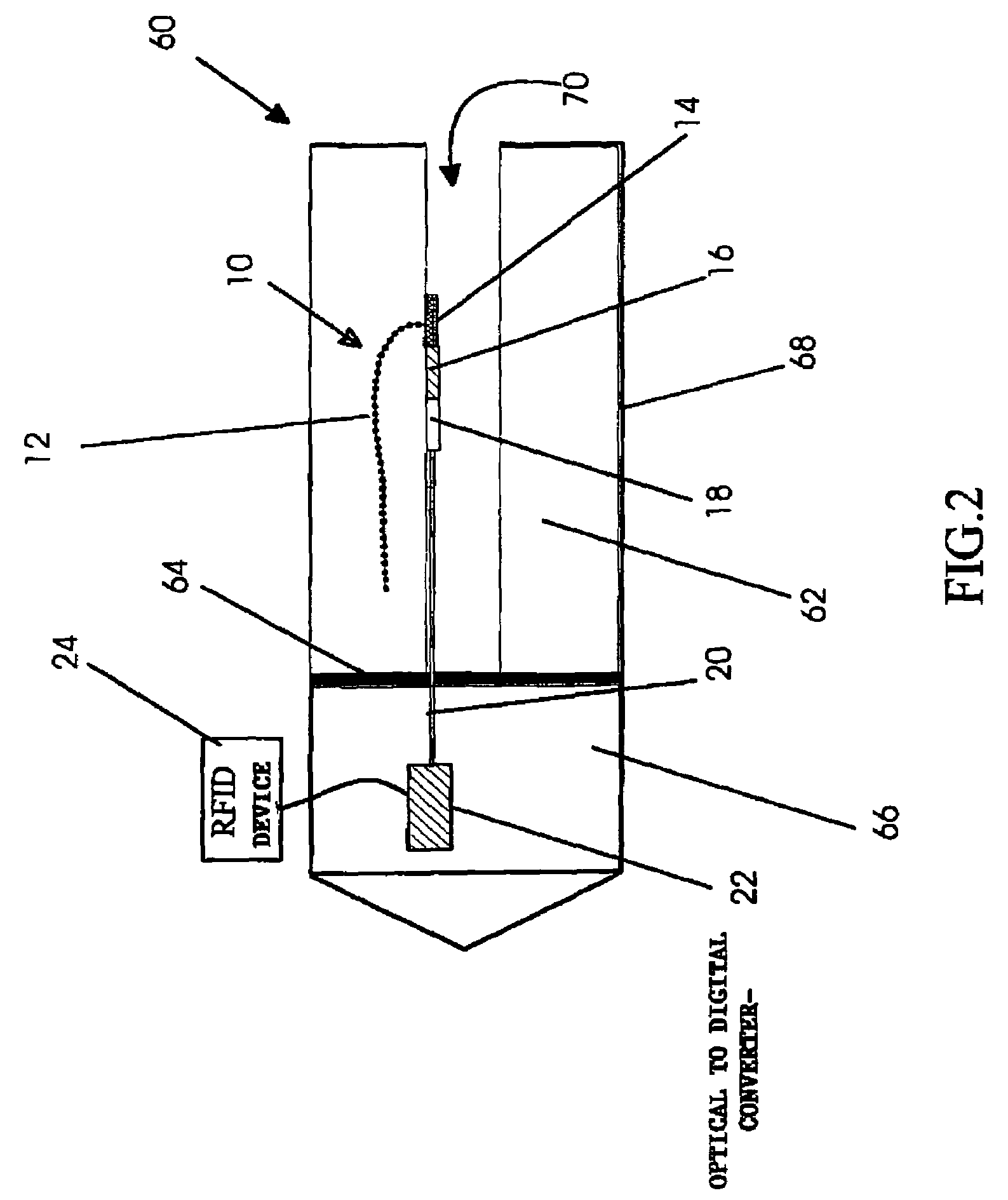Method for measuring the health of solid rocket propellant using an embedded sensor
a solid rocket and sensor technology, applied in the field of sensors, can solve the problems of poor mechanical impedance matching to propellant, brittleness, and relatively poor thermal stability, and achieve the effects of reducing capacitance, increasing modulus, and improving thermal stability
- Summary
- Abstract
- Description
- Claims
- Application Information
AI Technical Summary
Benefits of technology
Problems solved by technology
Method used
Image
Examples
Embodiment Construction
[0014]The invention is a method, and related apparatus, for nondestructively remotely measuring the health of an energetic material, where the energetic material is a solid rocket propellant. The invented method recognizes that as propellants and the like develop health issues, the materials become harder (i.e. shear modulus increases), and there can be propellant / insulater debonding and bore cracking. Cracks and debonding can induce failure of the rocket upon ignition. In addition, some propellants may become softer with age, leading to “slump”—unacceptable permanent deformation of the propellant. Motors are chemically active throughout their entire lives, leading to issues of motor aging perhaps far down the road. A major cause of hardening in propellants over time is oxidative cross-linking. The introduction of moisture into the system may also be extremely destructive to material properties in both the bulk materials and at the interfaces. There are two general classes of flaws ...
PUM
 Login to View More
Login to View More Abstract
Description
Claims
Application Information
 Login to View More
Login to View More - R&D
- Intellectual Property
- Life Sciences
- Materials
- Tech Scout
- Unparalleled Data Quality
- Higher Quality Content
- 60% Fewer Hallucinations
Browse by: Latest US Patents, China's latest patents, Technical Efficacy Thesaurus, Application Domain, Technology Topic, Popular Technical Reports.
© 2025 PatSnap. All rights reserved.Legal|Privacy policy|Modern Slavery Act Transparency Statement|Sitemap|About US| Contact US: help@patsnap.com



